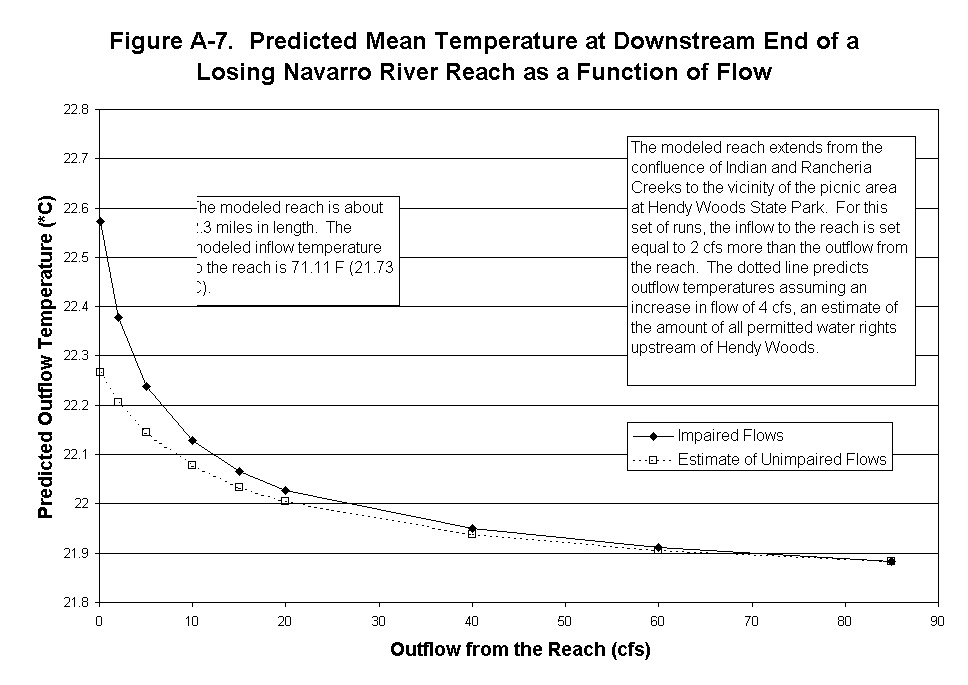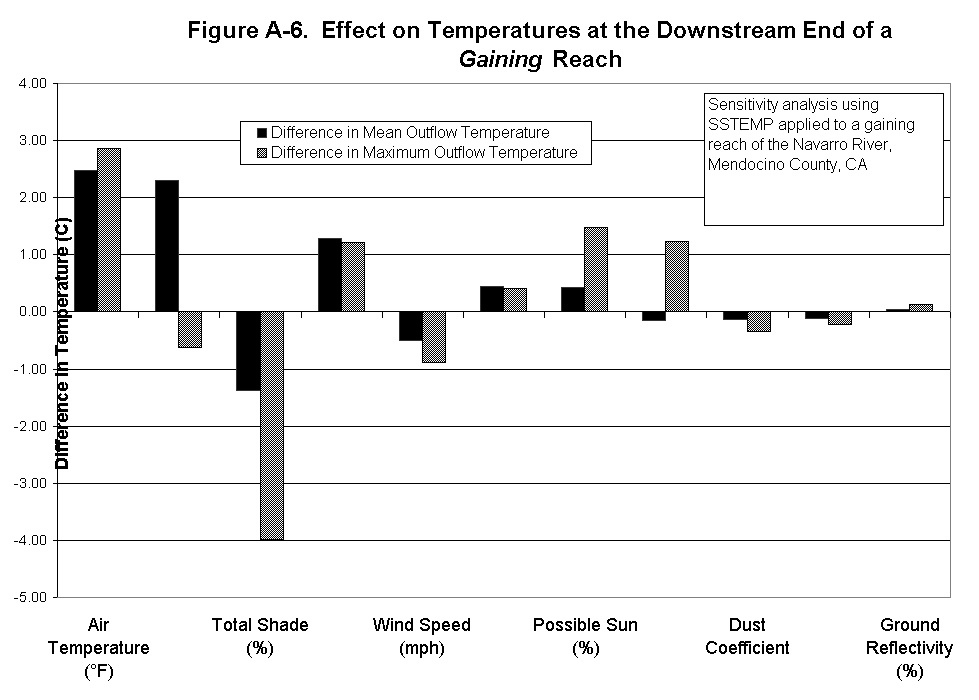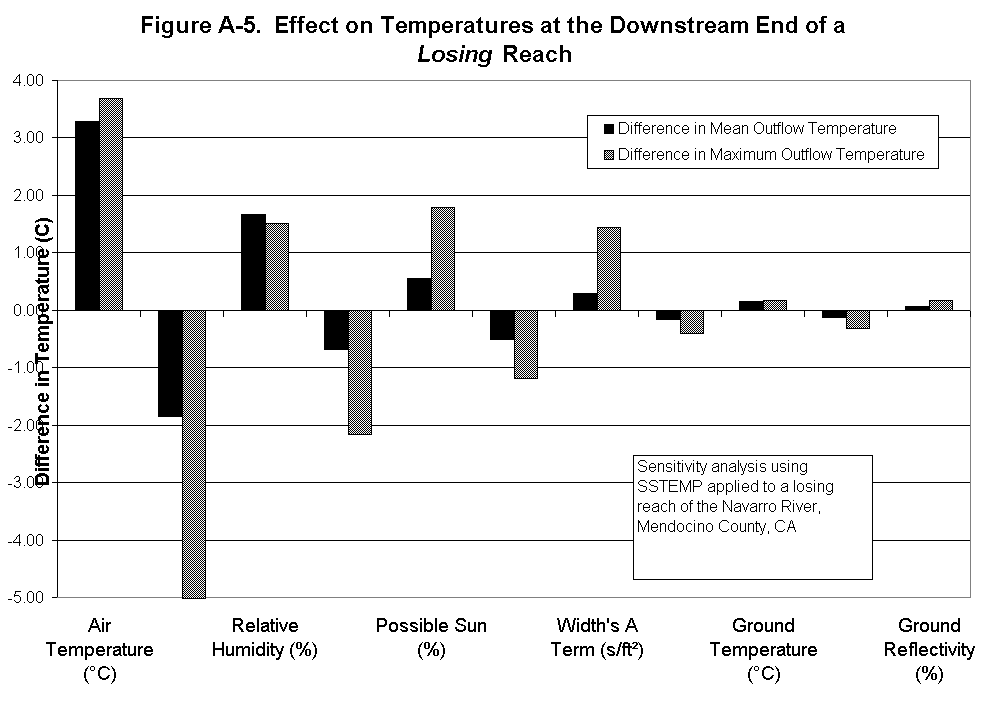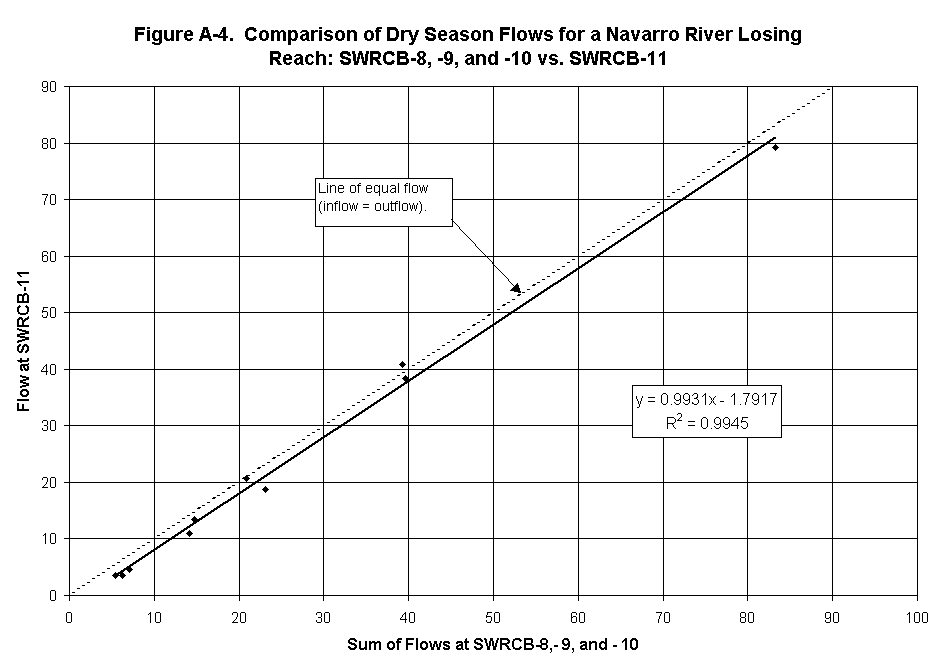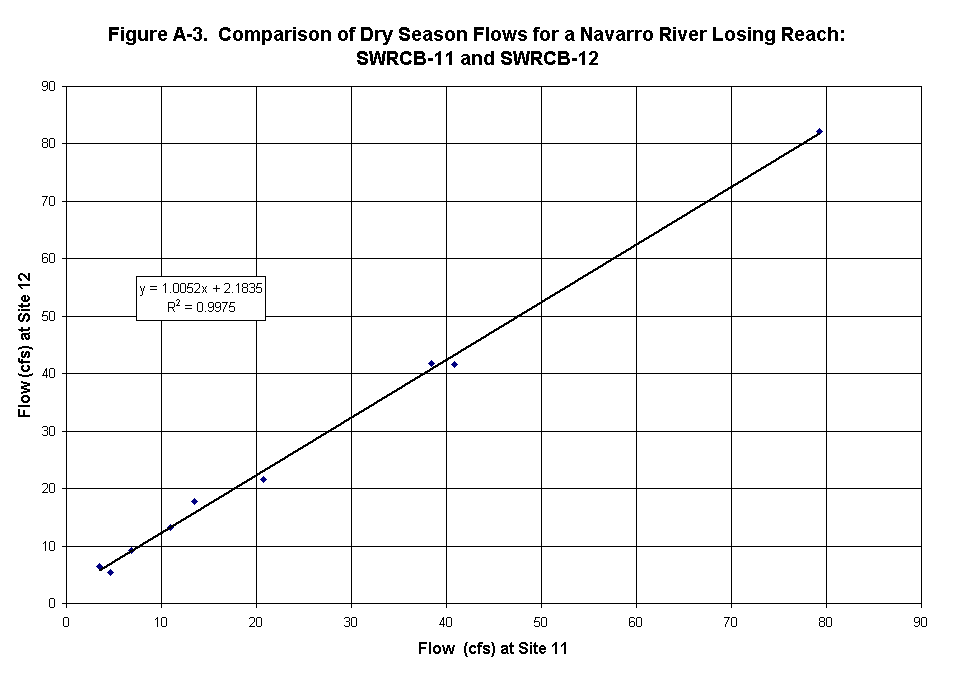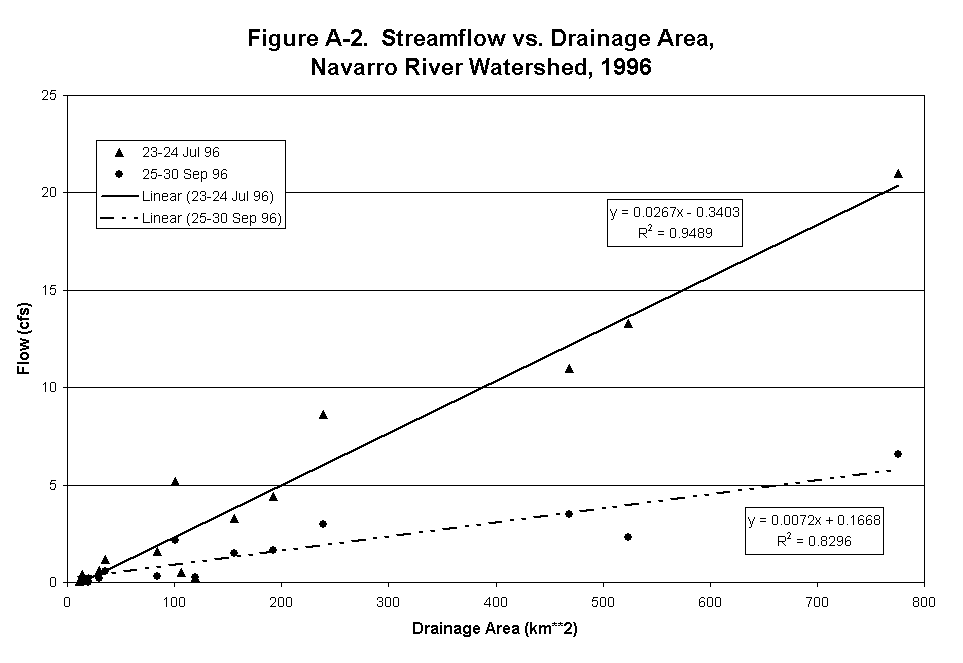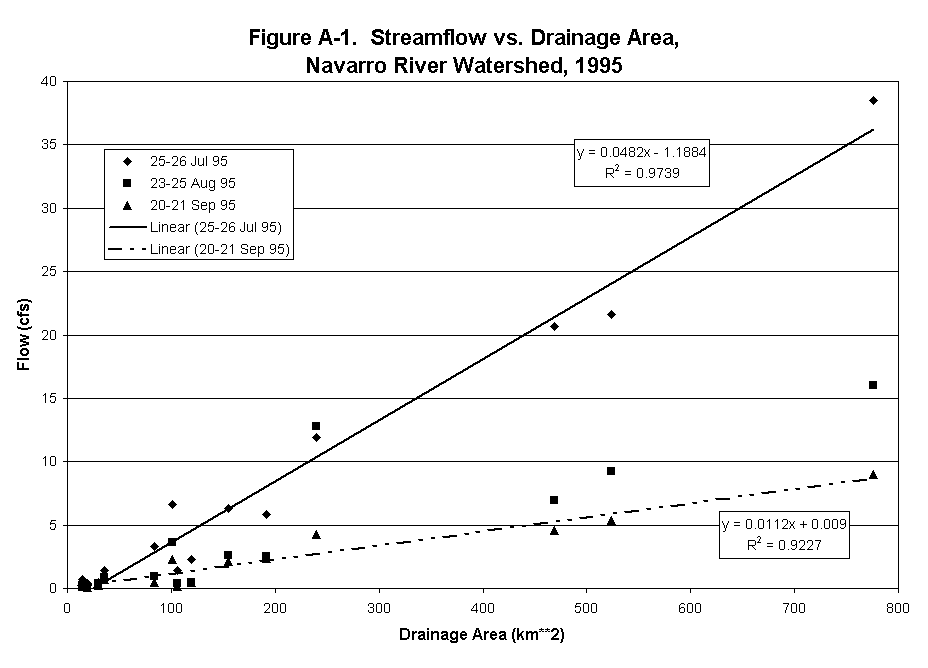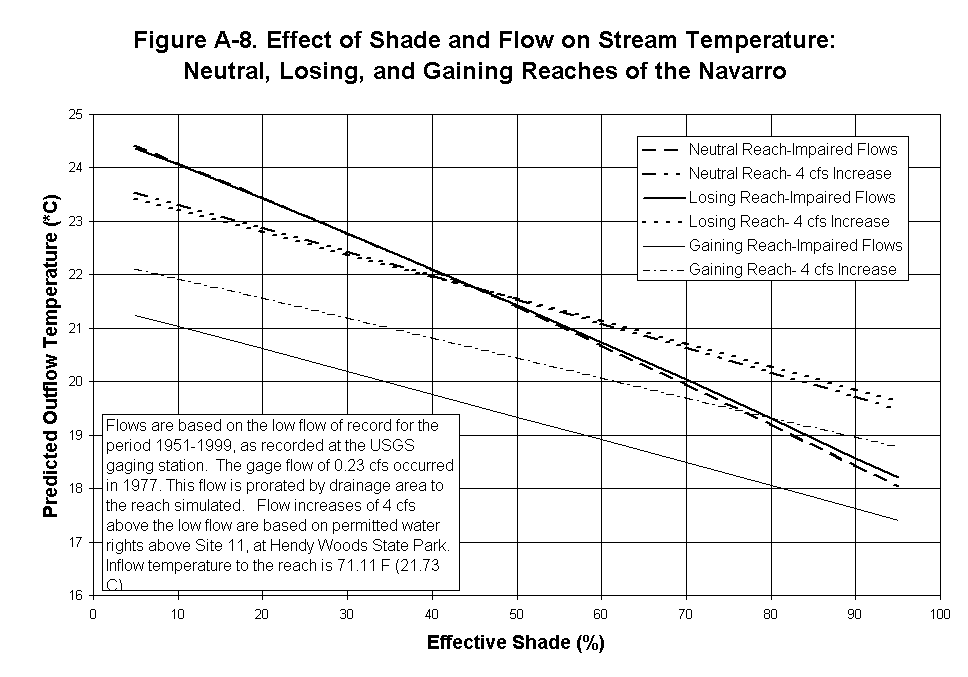
| Table A-1. Ranges of Values Used in SSTEMP Sensitivity Analysis | ||||||
| Parameter | Units | Reference | Range | |||
| Gaining | Losing | Low | High | |||
| Calibration Date | 7/31/1995 | 7/25/1996 | ||||
| Inflow Temperature | F/C | 72.72/22.62 | 71.11/21.73 | 66/18.89 | 73.4/23 | |
| Width's B-Term | dimensionless | 0.207 | 0.38 | |||
| Air Temperature | F/C | 69/20.56 | 72.09/22.27 | 60/15.56 | 80/26.67 | |
| Total Shade | % | 32 | 33 | 5 | 70 | |
| Wind Speed | mph | 5 | 5 | 3 | 7 | |
| Relative Humidity | % | 70 | 60 | 40 | 80 | |
| Possible Sun | % | 65 | 65 | 50 | 90 | |
| Gaining Reach | ||||||
| Inflow | cfs | 18.65 | - | 0.13 | 85 | |
| Outflow | cfs | 19.8 | - | 2.33 | 87.4 | |
| Width's A-Term | sec/ft2 | 11.76 | - | 5.39 | 24.26 | |
| Losing Reach | ||||||
| Inflow | cfs | - | 14.09 | 2.13 | 87 | |
| Outflow | cfs | - | 10.95 | 0.13 | 85 | |
| Width's A-Term | sec/ft2 | - | 8.24 | 4.03 | 16.11 | |
| Ground Temperature | F/C | 62/16.67 | 62/16.67 | 55/12.78 | 67/19.44 | |
| Thermal Gradient | joules/m2/sec/C | 1.65 | 1.65 | 0.65 | 2.65 | |
| Dust Coefficient | dimensionless | 5 | 5 | 3 | 15 | |
| Ground Reflectivity | % | 10 | 10 | 5 | 30 | |
| Notes: | ||||||
| The range of the A Term is equivalent to a width:depth ratio range from 4.86 to 78. | ||||||
| Stream temperatures, air temperature, wind speed, and relative humidity are based on | ||||||
| 7-day running average values from records collected at the California Department of | ||||||
| Forestry facility near Boonville. | ||||||

